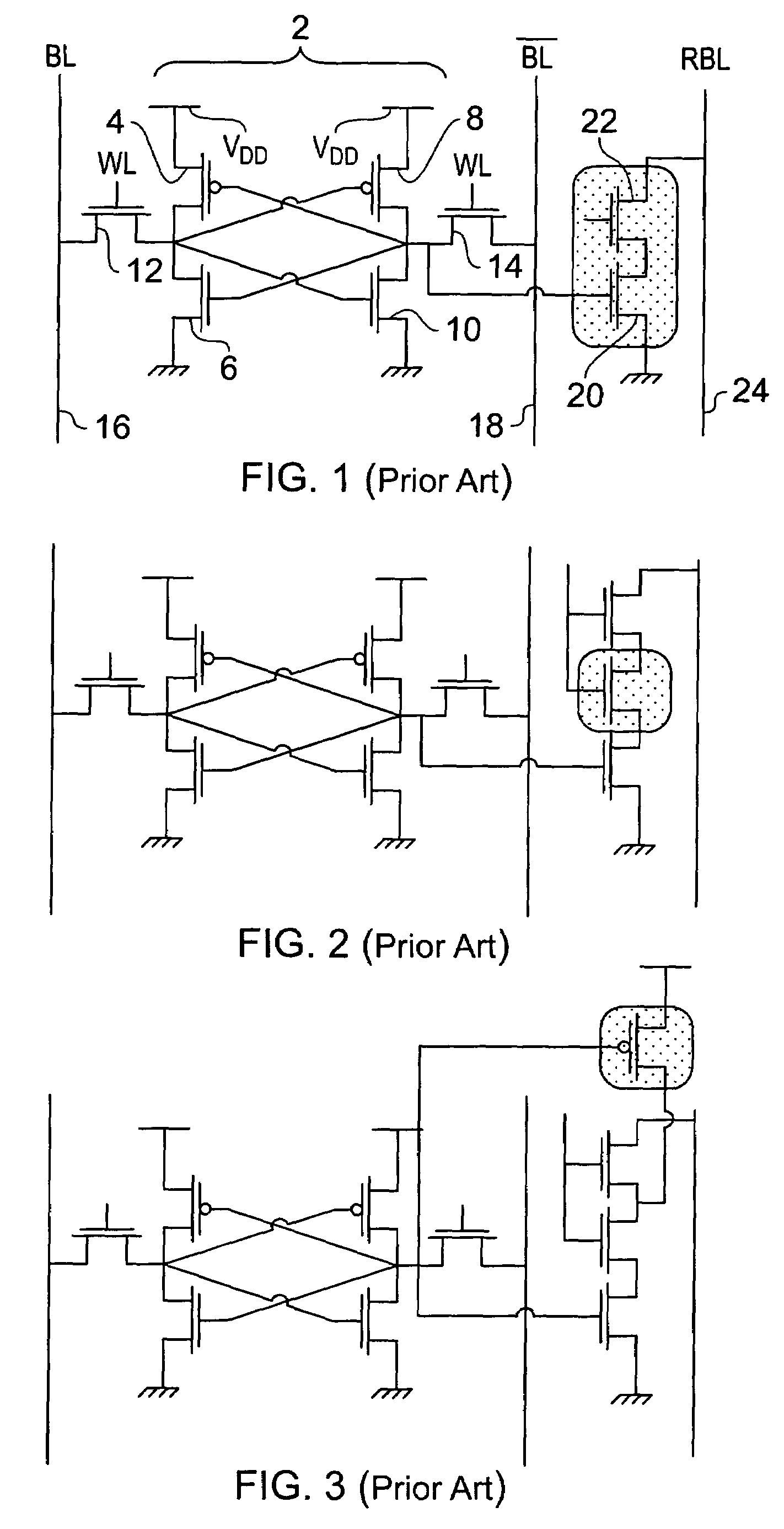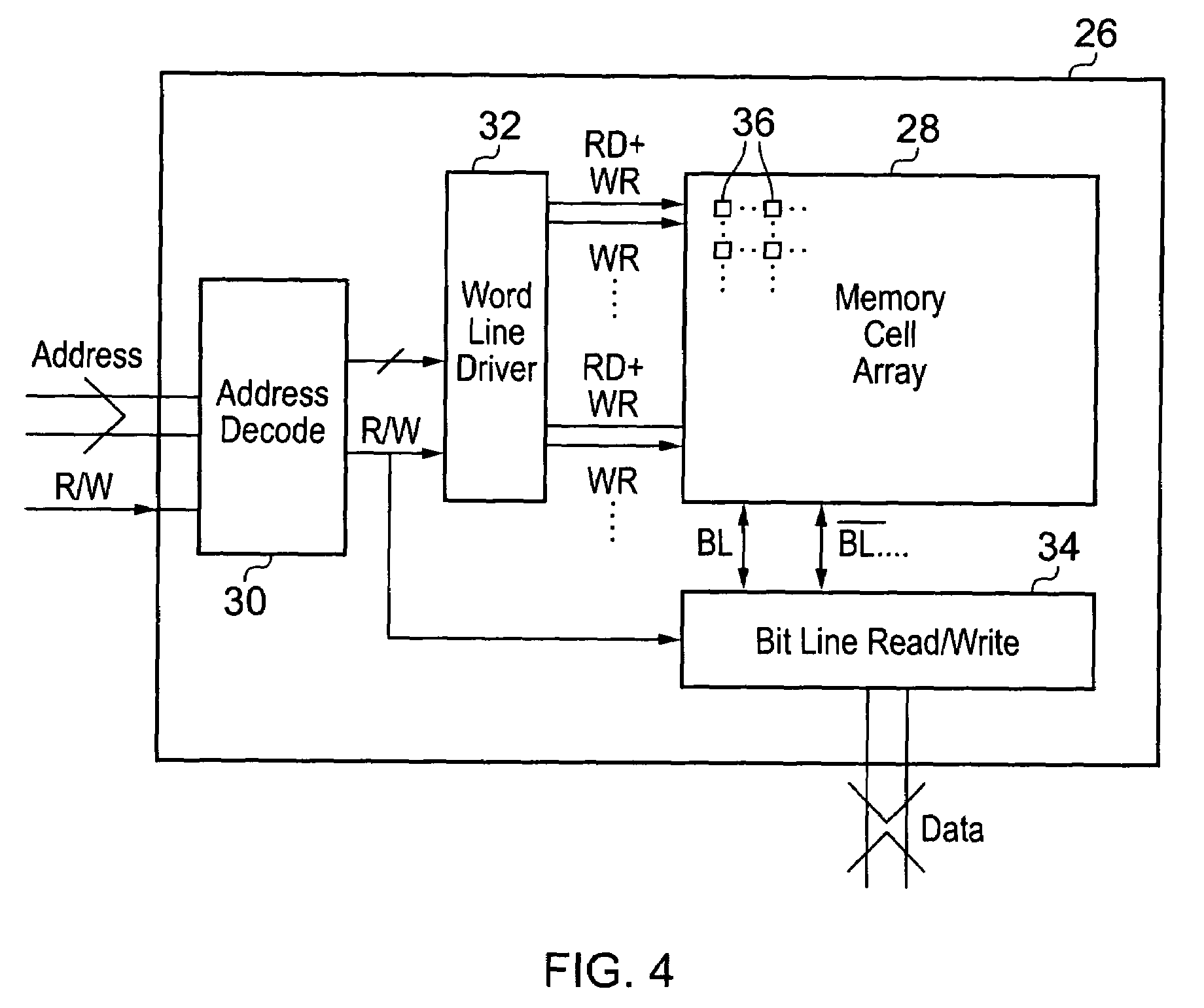Integrated circuit memory access mechanisms
a technology of access mechanism and integrated circuit, which is applied in the field can solve the problems of failure of integrated circuit memory, device that differs from its original design characteristics, and is more susceptible to manufacturing variation, so as to improve read robustness, increase read robustness, and improve read robustness
- Summary
- Abstract
- Description
- Claims
- Application Information
AI Technical Summary
Benefits of technology
Problems solved by technology
Method used
Image
Examples
Embodiment Construction
FIG. 4 shows an integrated circuit memory 26 including a memory cell array 28, an address decoder 30, a word line driver 32 and a bit line read / write circuit 34. It will be appreciated that the integrated circuit memory 26 will typically include many other circuit elements, but these have been omitted from FIG. 4 for the sake of clarity. It will also be appreciated that the integrated circuit memory 26 may be formed as a discrete package on its own or as part of an integrated circuit which contains other circuit elements, such as a processor core, cache memory, DSP circuit etc (as typically used in system-on-chip integrated circuits).
In operation the integrated circuit memory 26 receives an address to be accessed and a signal indicating whether a read operation or a write operation is to be performed. The address decoder 30 responds to this received address to pass appropriate control signals to the word line driver 32 (which may be considered to be an access controller either on it...
PUM
 Login to View More
Login to View More Abstract
Description
Claims
Application Information
 Login to View More
Login to View More - R&D
- Intellectual Property
- Life Sciences
- Materials
- Tech Scout
- Unparalleled Data Quality
- Higher Quality Content
- 60% Fewer Hallucinations
Browse by: Latest US Patents, China's latest patents, Technical Efficacy Thesaurus, Application Domain, Technology Topic, Popular Technical Reports.
© 2025 PatSnap. All rights reserved.Legal|Privacy policy|Modern Slavery Act Transparency Statement|Sitemap|About US| Contact US: help@patsnap.com



